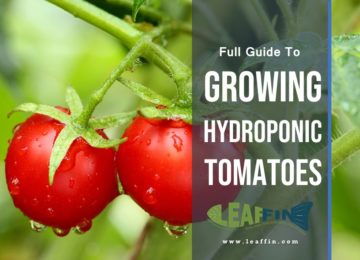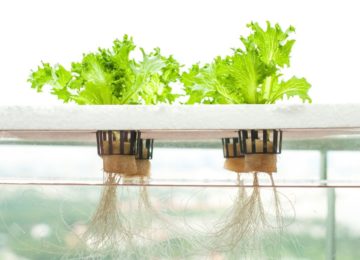If this year will be your first garden, you will probably have read through co-gardening and then stopped. Right? When it’s your first year gardening, you may not want to deal with preserving any of your loot the first year. Or maybe you are feeling ambitious? Here’s where you’ll want to start when you’re ready.
The first thing I’d like you to keep in mind is that preservation is a process just like gardening. You’ll start with what’s ready and then keep moving down the line as everything else is ready. One of the overwhelming parts if you aren’t used to it yet, is that you have to keep taking care of the garden too. So…this can be a lot of work.
Let’s look at some pro’s and con’s of 3 different methods.
Table of Contents
Freezing
Pro’s:
I think most people start with freezing for a couple of reasons. First of all, most produce can be frozen. If you’re willing to do a little blanching, this is the easiest and cheapest method.
It is also an easy way to cook. Unlike dehydrated or dried produce that can take some work to prepare, the things you’ve frozen can just be moved over to the refrigerator the day before you want to use them.
Very few supplies are needed. If you have access to clean water, a large pot with a heat source, and plastic bags, you’ve pretty much got what you need.
Probably the most important reason a newbie would consider freezing first is that it is also the fastest method. Prepare, blanch briefly, drain, package, freeze. Quick, easy, right? And some things don’t even need to be blanched.
Con’s
As far as living off-grid, freezing a year’s worth of produce just isn’t feasible. I can’t imagine how many freezers (with power) would be needed to put all our food away each year.
Serious preppers, and those with experience stay away from freezing unless it’s the last option most of the time. Imagine, if for whatever reason, you lost your power–then you’ve lost all that food.
We only freeze what we run out of time to can, or when we run out of jars and dehydration isn’t an option. And honestly, it makes us nervous. If a storm lasts a long time and we use all the solar power, we can always pack it out into the snow, but we’ve got predators around here, so that’s not a good option either.
Dehydrating
Pro’s
I love to dehydrate fruits more than anything else. Many dehydrated fruits can be used for snacks the rest of the year just the way they are. Dried apple chips, any type of raisin or berry, oranges, and plums, just to name a few. I can easily pack them for a day out as a healthy snack or part of a healthy meal.
Most produce will last quite a long time in the dehydrated state if properly packaged.
I actually prefer some produce in the dehydrated state. When I make pumpkin waffles, I prefer to use dehydrated pumpkin. When I want to flavor meats and dishes, I prefer dehydrated onions to make onion soup/sauce mixes. I prefer some tomatoes dried when I make crackers. Some things are just easier this way.
Dehydrated foods take up the least amount of storage space. I fill one plastic tote alone with enough dried apples to easily last a year–and we share a lot. In it I have apple chips and cinnamon apples for gifts and snacks, and diced apples for baking. To keep this amount of apples in my cold cellar would easily take up a wall.
Dehydrators use less power than you would think.
Con’s
You have to have a dehydrator. And dehydrators can be expensive. You can borrow a friends, but that means they can’t use it. And, some things leave an odor–which can be “reassigned” to many loads of produce used afterwards. We have one dehydrator we use exclusively for onions and potatoes–because we don’t mind if some of them taste and smell like onions. (If you’ve never owned a dehydrator and want to try one out, this is the one I could suggest starting with.) We have a separate dehydrator we use for everything else.
Even if you get a fairly expensive dehydrator, it can only hold so much at a time. You’re going to be doing many loads once you get serious about dehydrating. We have a nine tray Excalibur dehydrator we use for everything else. It is bigger and holds more than the little one, but is much more costly. During peak harvest time, it is usually just under $200.
As far as vegetables are concerned, you are going to need a lot of water to rehydrate all that produce. This isn’t a problem if you have clean, reliable water. But again, if you are thinking of going off-grid or using this as your survival food, you’re going to have to figure out where to get all that water.
A last bit of advice. If you aren’t used to eating dried fruits, please remember that when you eat them in a dried state, they will expand in your stomach over time as they are exposed to fluids. Twenty apple chips may seem like a little snack to you, but that could quickly turn into four apples once inside–which can make you sick. Be careful.
Canning
Pro’s
Everyone wants to have the shelves of their pantries lined with that beautiful, brightly colored produce. Right? It’s visually appealing–not only because it’s pretty, but also because it’s a visual reminder of all your hard work. There isn’t a visual reminder of what’s in the deep freezer, or the dried produce inside buckets and boxes.
Opening a bottle of veggies is like opening a can of veggies from the store. It’s comforting in some ways. In a survival situation, this type of storage aids in mental strength and reducing stress because of the familiarity of it. You don’t have to worry about power and you don’t have to worry about finding clean water to make your food usable.
Also in a survival situation, it is easier to ration. You can more comfortably pull out 90 bottles (mix and match) for a month and know what you have, than you can pull out a few tiny bags of dehydrated foods. Your mind can and will play tricks on you if you aren’t used to this. You see bottles, your mind thinks volume and comfort. You see tiny bags, your mind thinks that can’t be enough and is prone to panic.
Most things bottled have water in them. If things got tough, bean water probably wouldn’t taste the best, but it would be packed with those nutrients. Nearly every bottle of food would offer clean and healthy water.
Don’t need to drink the water that badly, but still trying to conserve? Use that vitamin-rich water to water any plants you may have.
If you are only water bathing produce and not pressure canning it, a stock pot is a lot cheaper than a canner.
Con’s
I think canning is intimidating for beginners. I highly suggest that unless your food supply depends on it, that you start with water bathing the first year. Don’t try to pressure can anything until the second year.
Canning is expensive to start. There’s no way around it. Even if you borrow the canner, and the tools, you still have to purchase your bottles, rings, and lids. Most likely, you will be buying new lids for every use (rings are reusable if kept in good shape).
By the time you buy seeds, pay a water bill, (let’s assume you borrow the canner and supplies) and buy your bottles and lids, your first year you could be paying $3 per pint of vegetables. If you aren’t the type of person to keep going and canning every year, it’s not worth it.
Depending on where you live, earthquakes happen. This means you aren’t lining up your bottles on all your shelves (I know, I know, I’m sorry to tell you that). If you’re really in need of the food inside those bottles, your probably packing them back into boxes (like I do), or crates, or strapping them in somehow–because glass breaks.
We live on a major falt-line. I keep mine in the boxes the jars came in with cardboard supporting all four sides of every jar. You’ll likely be looking at crates and boxes, not beautiful bottles. If you aren’t worried about earthquakes, and don’t have little children running through your pantry, then maybe you will be able to have beautiful rows. I envy you ? .
If you don’t know how to use a pressure canner correctly, it can be dangerous–even fatal. This intimidates people (um…yeah?). But I assure you that if you are taking precautions, and checking your equipment before using, you should be perfectly safe. Try to have someone with experience assist you the first time.
Those of you who are experienced putter-uppers are saying, Wait a minute…she didn’t mention cold cellars. You’d be correct. Generally speaking, if you have a cold cellar, you already use it. And if you are brand new to gardening, I wouldn’t suggest building a cold cellar your first year, although they are amazing if you have consistently cold weather. They don’t keep your food if you have a warm spring (like we do this year).
So, here’s what I want to know. Which preservation methods is your favorite? Are you thinking about trying a different one this year?


